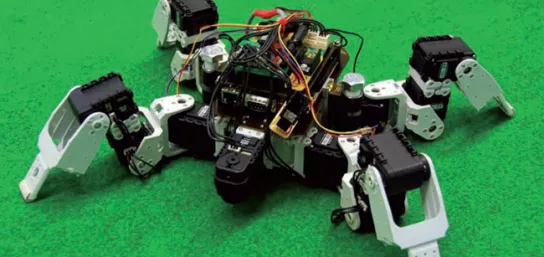Auf einen Blick
The little Crawling Robot poles through the laboratory. Its first movements are chubby and clumsy. According of the principle of “Reinforcement Learning” the little fellow should learn to walk. Like a little child it tries out. Successfully it optimizes its walk through trial and error. The movements become quickly more elegant and defined, the little thing gets sure-footed. Only that, the little chap is not of flesh and blood, but has little metallic arms and rubber cap on its lanky legs.
The robot developments of Prof. Ertel at the Institute for Artificial Intelligence at the University of Applied Sciences of Ravensburg-Weingarten are called “Krabbler” (crawler) and “Spinne” (spider). They function on the principle of try out and optimize their features step by step in such a way that they even learn elusive movement patterns. The little crawler learns its movement patterns in about 20 seconds, the spider with its four arms and eight joints needs about five to ten minutes. Such adaptive robots are even able to learn how to balance a serving tray without dropping any dishes, which would a huge task for the conventional programming methods. In the future, computer must not only process a quantity of numbers but also should be a help for the human in their daily life. The task of artificial intelligence is rather to sort waste, to iron laundry or to just get that black cable there in the corner.
Link to project: http://www.ailab.hs-weingarten.de/

